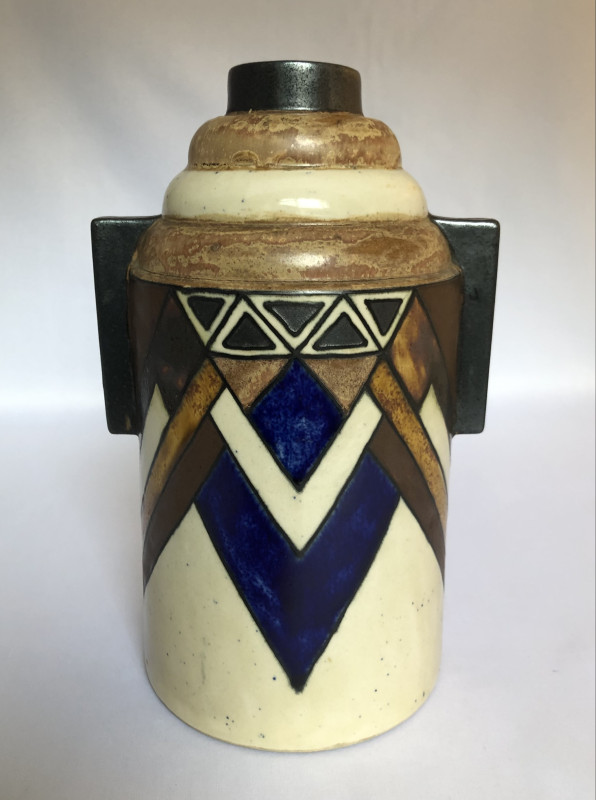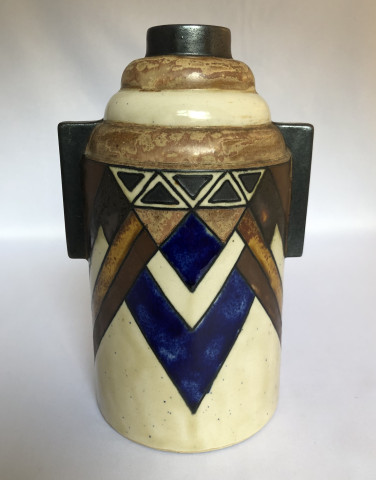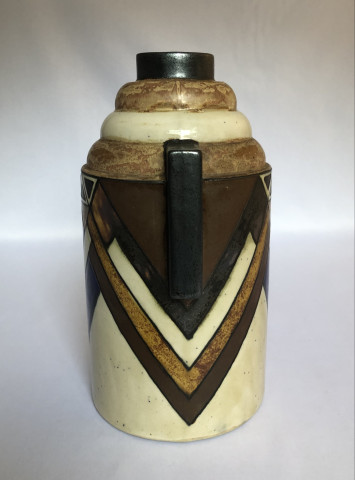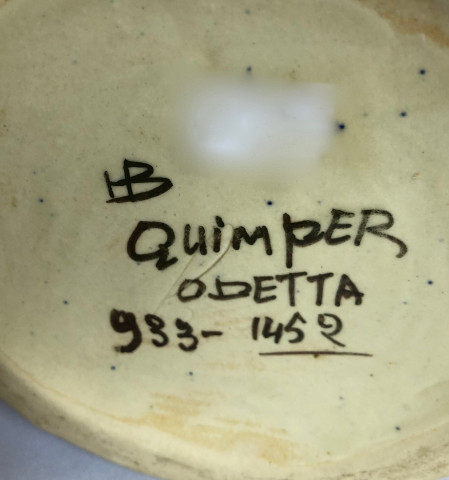Vase with tiers
Polychrome stoneware from the Odetta period, circa 1930.
Odetta period (1925-1936): After remaining relatively aloof from the art nouveau, it would have been a shame for the Quimper faience manufacturers to ignore the primitivist breath that infiltrated all artistic fields in the twenty-five years. Primitivism finds in the Breton soul and tradition a just resonance. The Celtic origins of the Bretons have always been indicated in their art by decorative signs whose esoteric geometry is not without recalling that found in African and Oceanic arts. Already custodians of their "local" primitivism, the people of Quimper have only to let themselves float on the current that fashion creates, and draw from their own sources rather than join a current from elsewhere.
It is the house HB which has the genius to undertake this deployment. It chose stoneware as a support, a material of ancient arts, ennobled in the great fire. With research and work, the material will be skilfully enamelled in dark colors of gray and blue, opposed to the softness of celadon greens, ivory whites, or the luminous brilliance of golds.
To differentiate these works from the usual classical production, they are produced from 1925 under the brand ODETTA (Ateliers de l'ODET). Many faience factories resorted to the use of other brands in order not to shock conservative customers with the novelty of abstract designs. The ODETTA brand has its own artistic direction which, in order to guarantee quality in diversity, calls upon artists, some of whom are already known. Most of them are from Brittany and are faithful to the tradition while knowing how to inflect it with their talent and make their works the necessary bridges between individualism and the universal. Among them, let us quote here Georges Brisson, Alphonse Chanteau, Louis Garin, René Olichon, Georges Renaud, Paul Fouillen, Abadie Landel... René Beauclair from Toulouse seems to be ODETTA's most prolific decorator. This artist is already known for his art nouveau wallpapers, jewelry, furniture, wrought iron and paintings. Is his understanding of Celtic primitivism linked to his Occitan origins? Whatever the case, he takes Breton stoneware to a very high level of abstraction and beauty.



